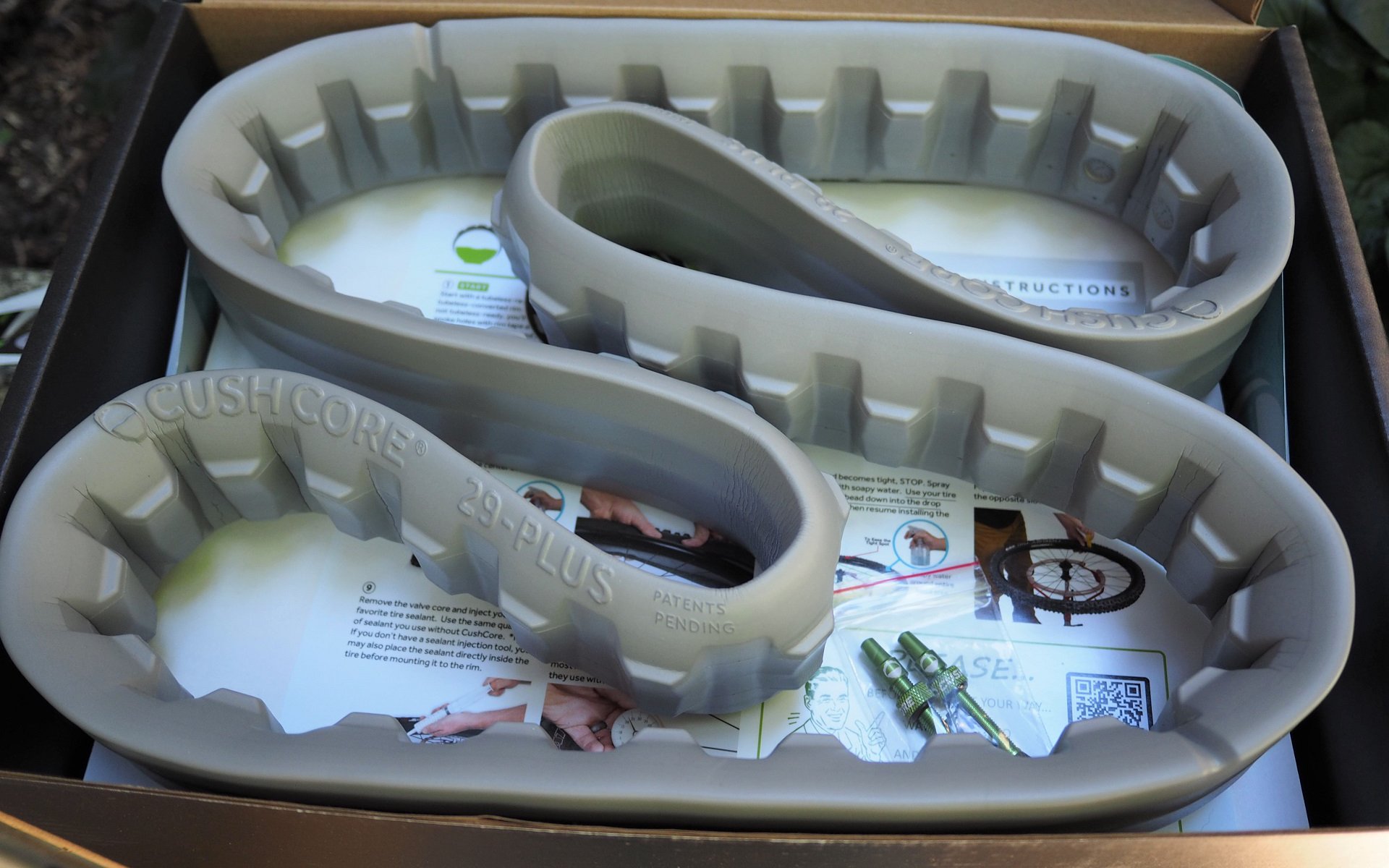
Installation | First Impressions
CushCore 29 PLUS Inserts Ridden
Inserted
I'm holding the 334 gram CushCore 29 Plus insert in one hand. In the other, my 1354 gram WTB Vigilante 29 x 2.8" tire with the heavy duty dual-ply Tough Casing. I'm no weight weenie; that's what I keep telling myself as I'm installing the beastly combo onto this well and truly battered, 675 gram, i39 Velocity Dually rim.
I'll be testing CushCore's super-sized inserts on my full suspension bike as well but, coming off Schwalbe's ProCore and right before that Huck Norris, I felt that my rigid Waltworks was the optimum starting point. For all my proselytizing I've managed to convert exactly zero riders to rigid forks but still I think it's an excellent tool for isolating product differences - in addition to being ridiculously fun on technical trails.
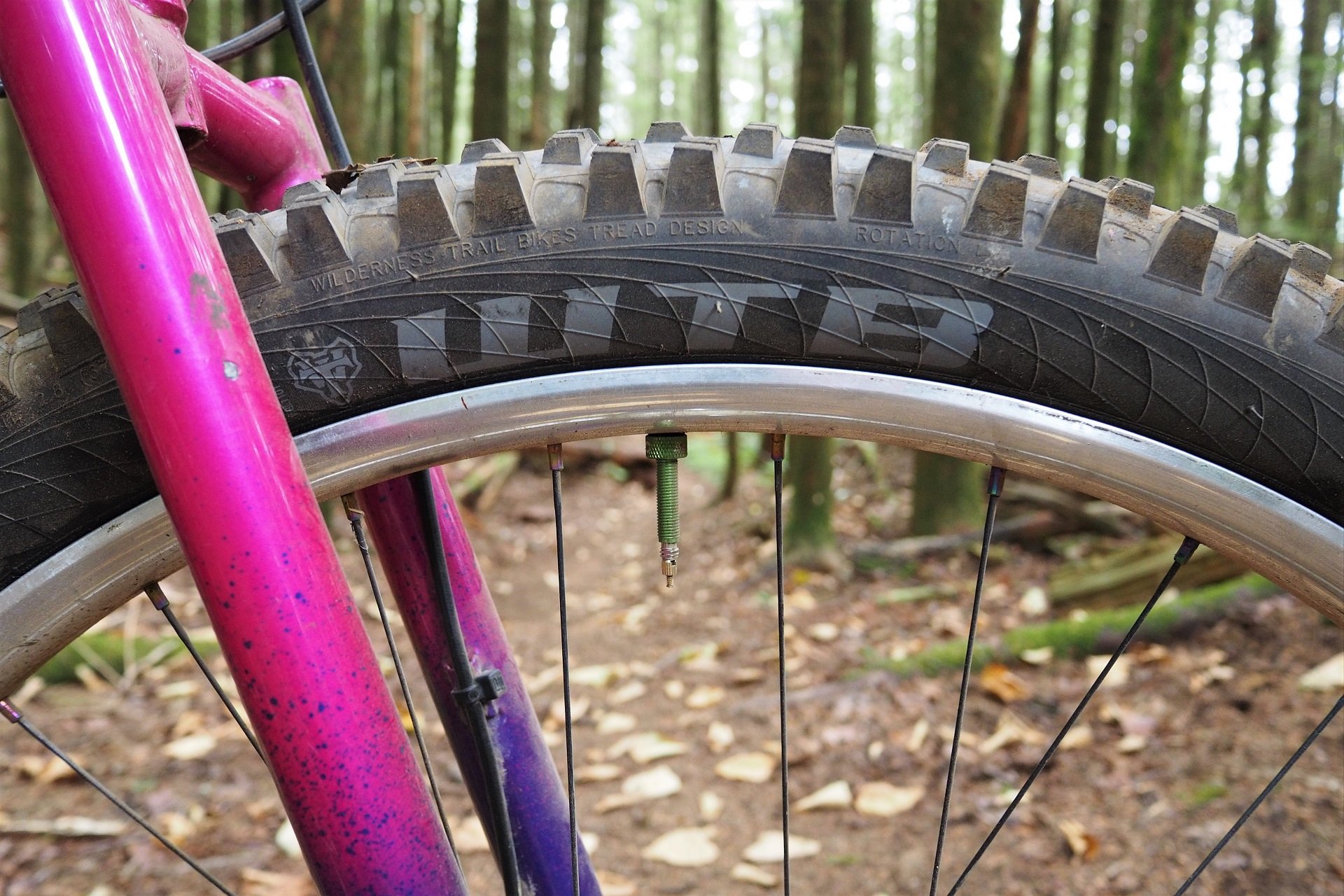
Telltale green CushCore valve stem. Great big 2.8" Vigilante 29er tire in the High Grip / Tough Casing combination. Working together to deliver gobs of traction and protect my battered rim.
I've started off by running the big CushCore up front to get a direct comparison to my ProCore setup. I will be installing the big bulwark out back as well to take advantage of the extra traction for the greasy winter conditions that are right around the corner.
As I noted in my Velocity Dually review, for the first time in years I've really felt my riding progressing and with that has come a proclivity to hack, jam, slam, and cram my rims into all manner of rock shapes and the pursuant damage one would expect. I'm hoping that CushCore will provide traction and comfort this winter and I'm not bothered about added weight or slower rolling for the shorter 'off-season' rides I'll be doing.
Follow The Instructions
When I first glimpsed the Plus version of CushCore sweating the small stuff at Crankworx this year, their booth featured some poor bastard working his way through what was undoubtedly his umpteenth install demonstration of the week - without a beer in sight. I almost reported these unsafe working conditions.
I've installed a couple of CushCore inserts and my approach with Plus version was similar. I allow myself more time than I think it's going to take, I make sure to have a couple wobbly pops ready to go, turn my patience up to 11, and I read the f***ing instructions. Yes, again.
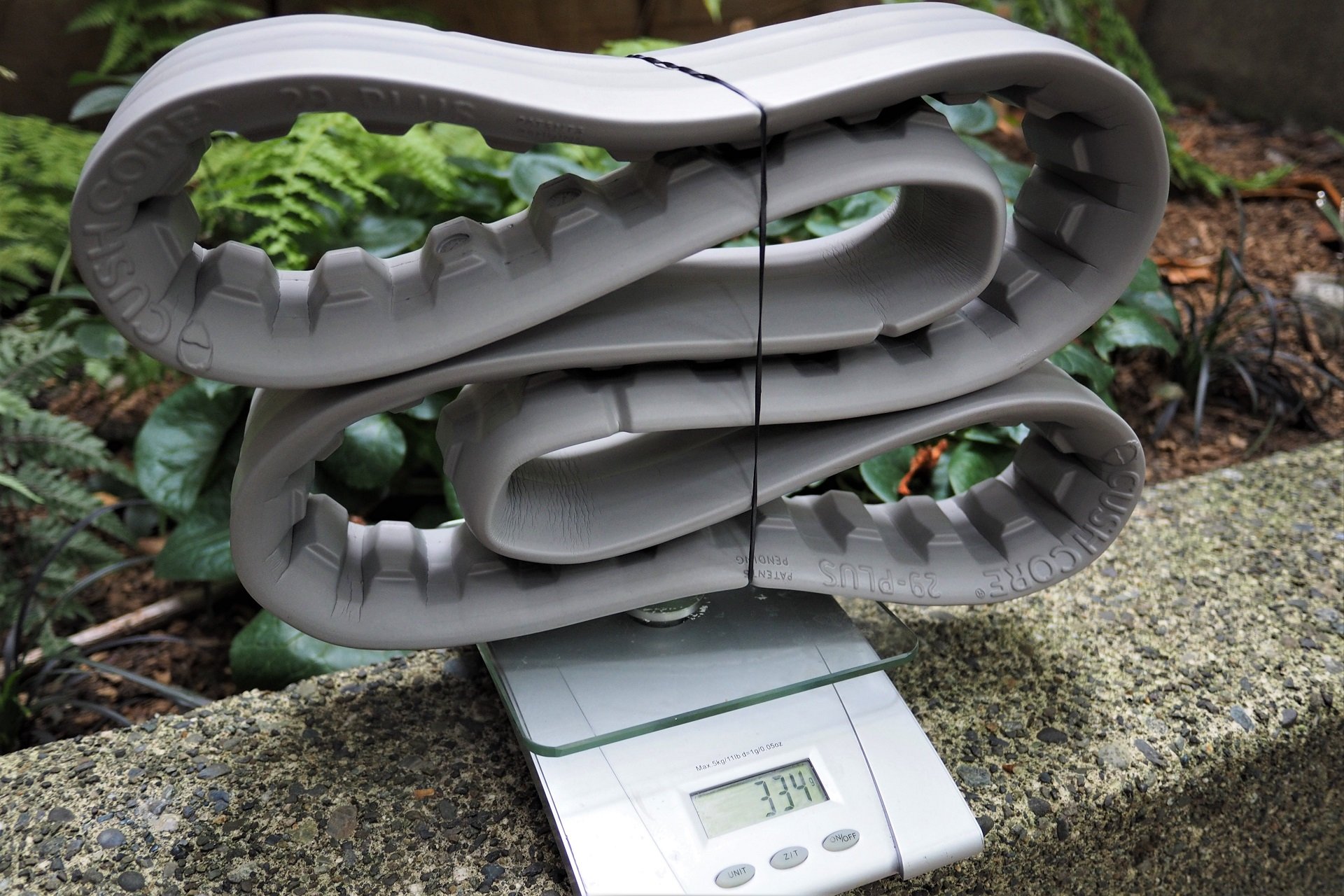
The elastic band weighs less than a gram, but I zeroed the scale with it on because I knew someone would call me on it otherwise.
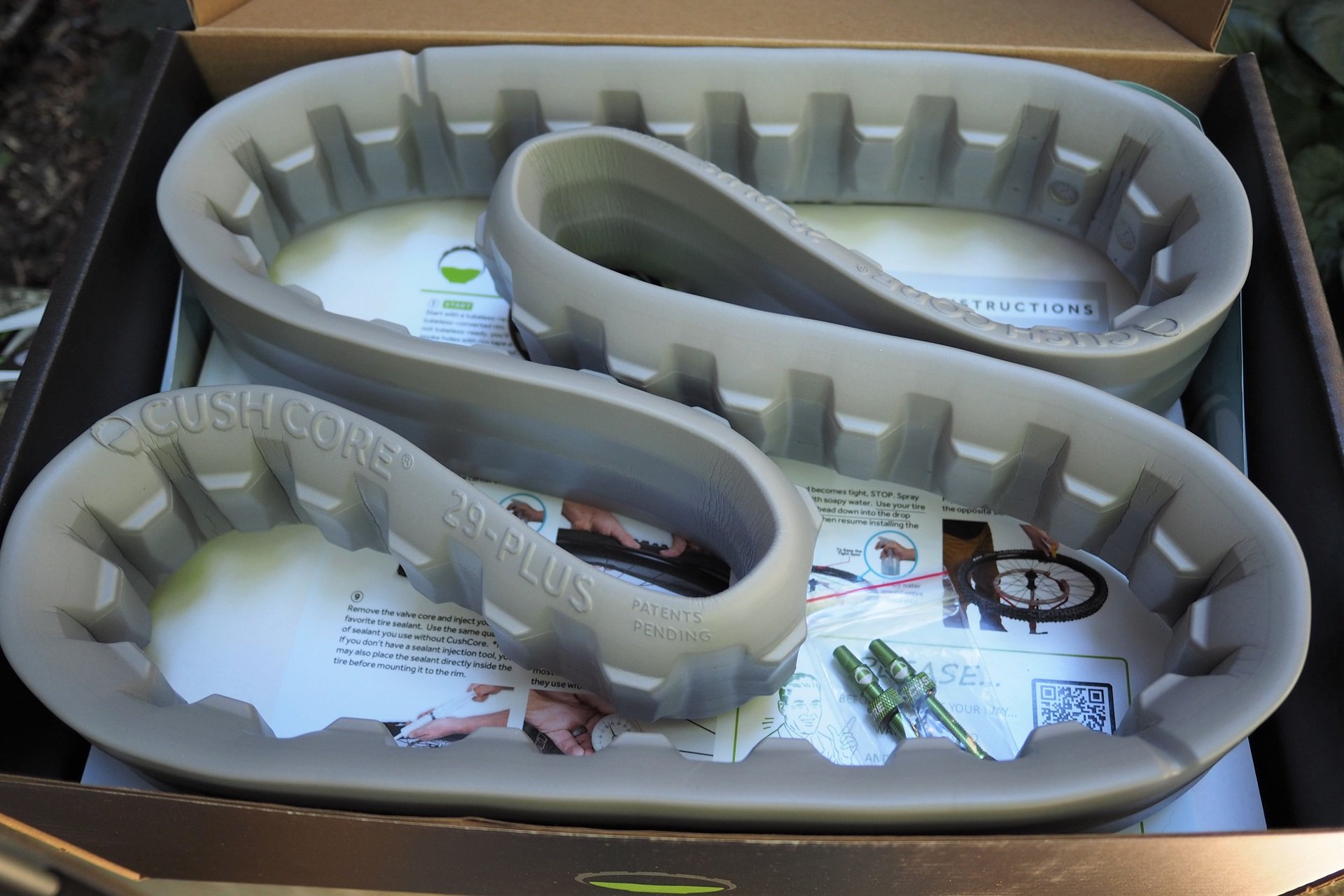
Two 29 Plus inserts, two CushCore valve stems, stickers, and the all important instruction sheet are all included in the box.
Instead of soapy water I use tubeless sealant to lube the tire and bead, it's a 'well duh' technique I picked up from my friend Sven years ago, but otherwise I follow the instructions to the letter. The most important thing to remember is to stuff the bead in under the insert all the way around with a tire lever. Otherwise the tire will be much too tight to force into place when I'm trying to pop-in the last of the bead.
No special bike mechanic magic is required and I truly believe anyone with patience can install CushCore. It just takes a bit of time to stuff that bead in all the way around on both sides.
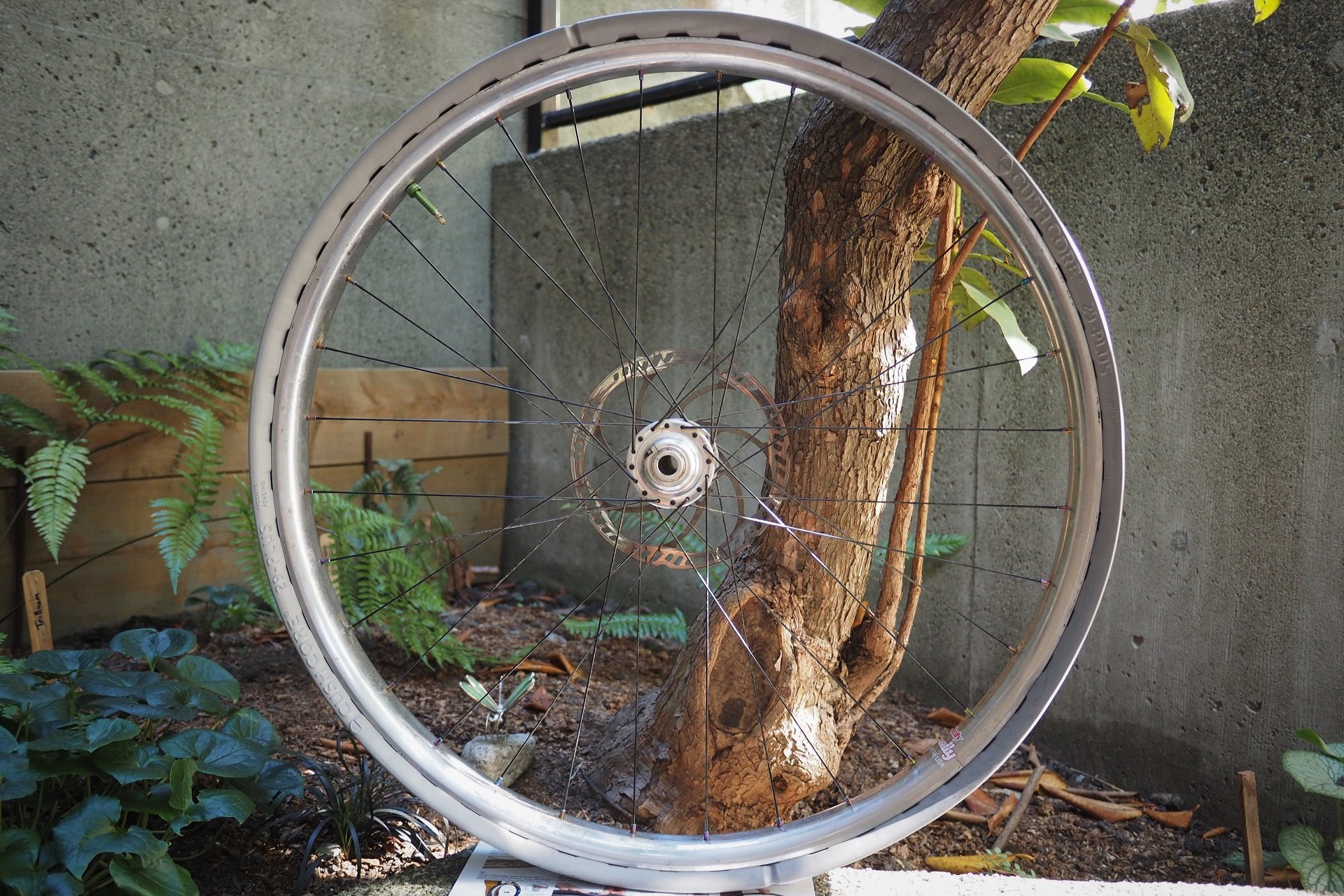
Stretch the insert over the rim and then stuff the tire bead between the insert and rim wall. Don't be afraid to stretch it!
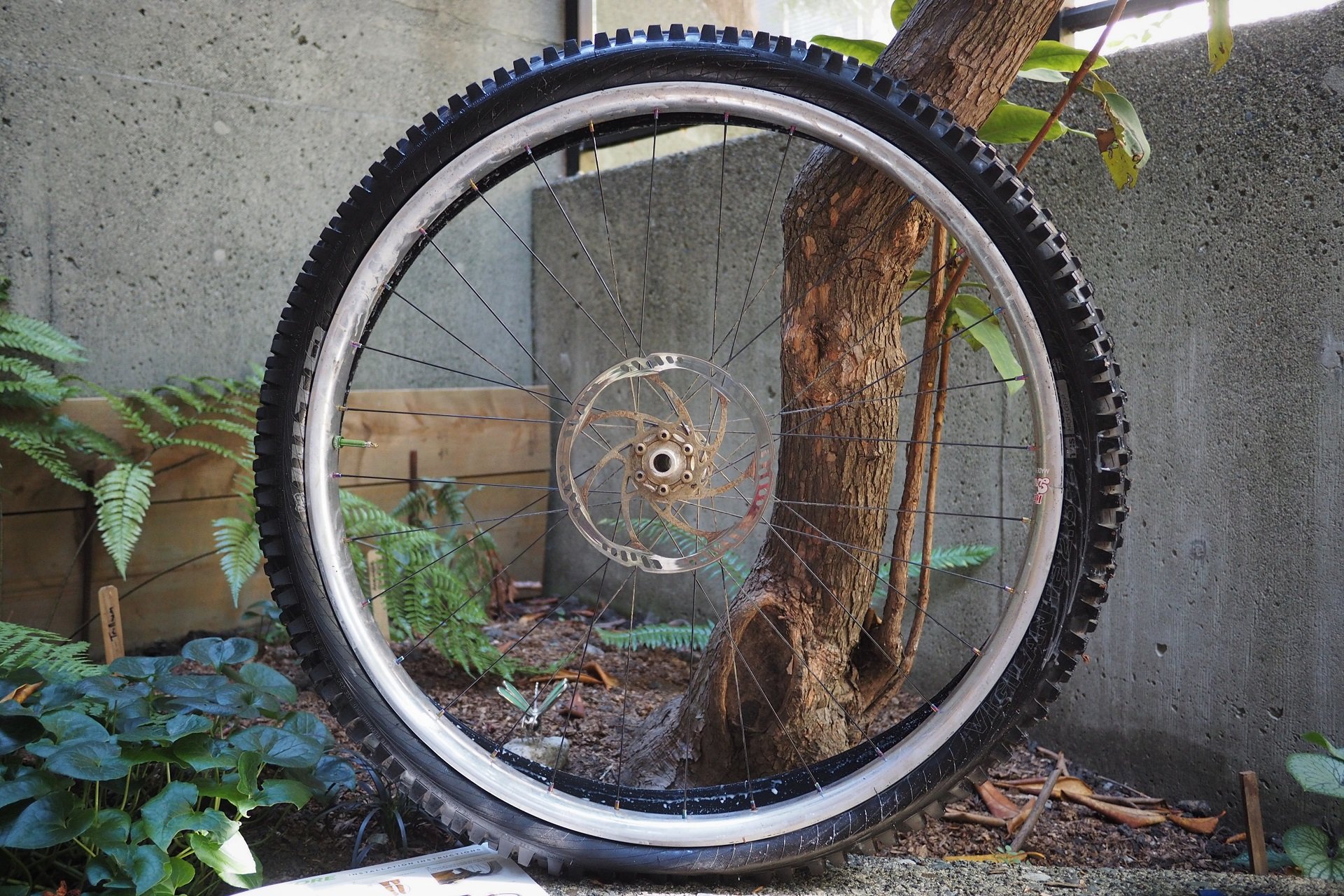
The trick to installing the last section of tire is to push the bead down with a tire lever the rest of the way around the rim.
First Rides
One key instruction I failed to follow, to my initial peril, relates to tire pressure. I already run the front tire as soft as I can while still preventing excessive squirm and rim damage, so the idea I could ditch another five psi seemed hilarious. Except it really isn't. As with any plus size setup, the perfect psi zone is more about feel than a gauge reading, but I found it simple to find the right pressure with the reduced volume and added sidewall support of CushCore.
The pressure setting that feels a touch squirrely out of the saddle on the loosest climbs has the best combination of traction and support on the way down. The CushCore insert takes up significant volume so the tire ramps up much faster and firmer than a regular tubeless setup.
I’m still experimenting with pressures and will use the Accu-Gauges Cam tested to provide my usable range for the full review. To give an idea, on my most recent ride down some of the rockiest and rootiest trails on Mt Seymour I was running about 12psi up front in the dual-ply 2.8 Vigilante and about 13psi in the 2.6 SE5 out back. This provided excellent traction up and down with no squirminess in corners but I did hard bottom the inserts a few times.
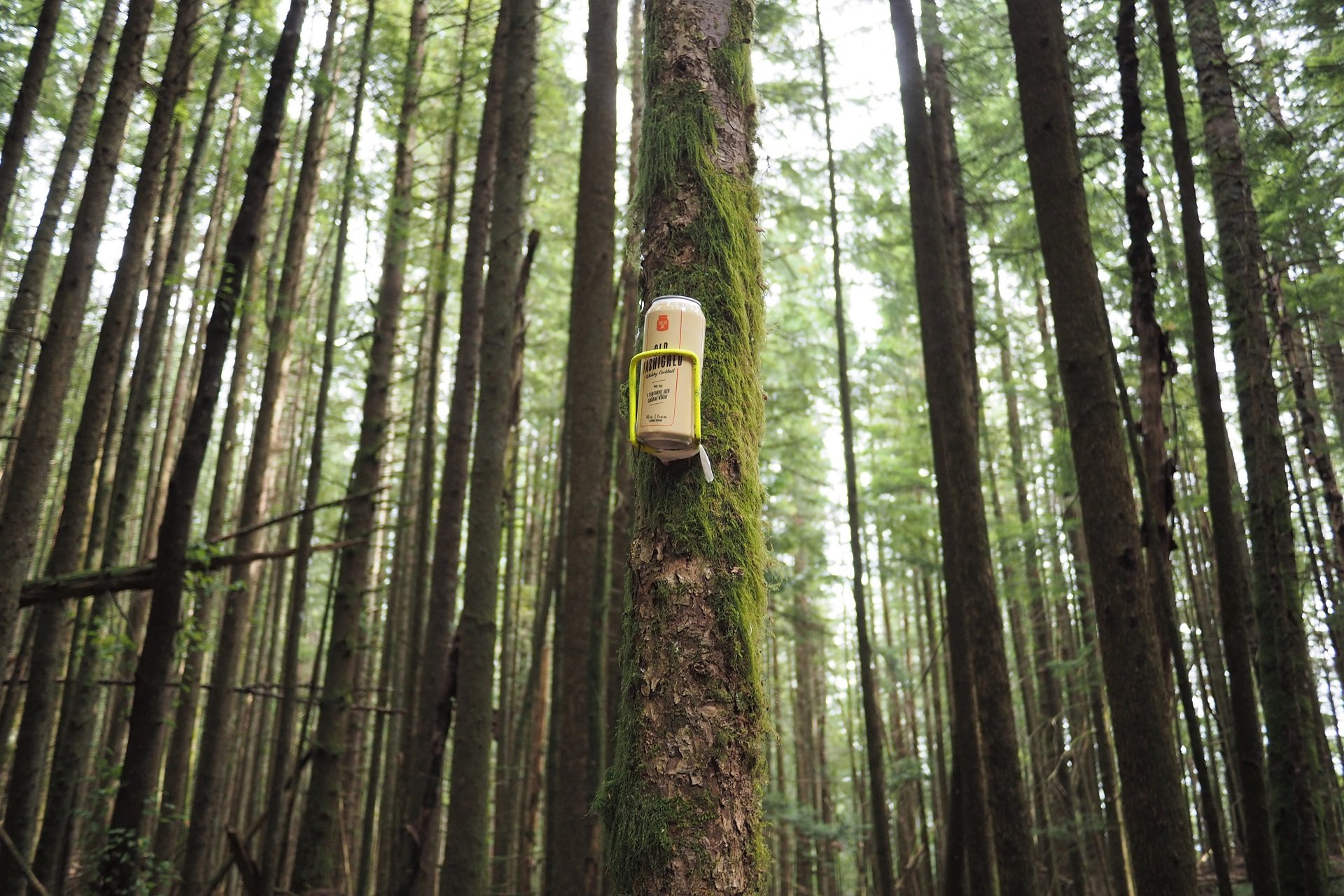
Schrödinger's beer is both full and empty (and out of reach).
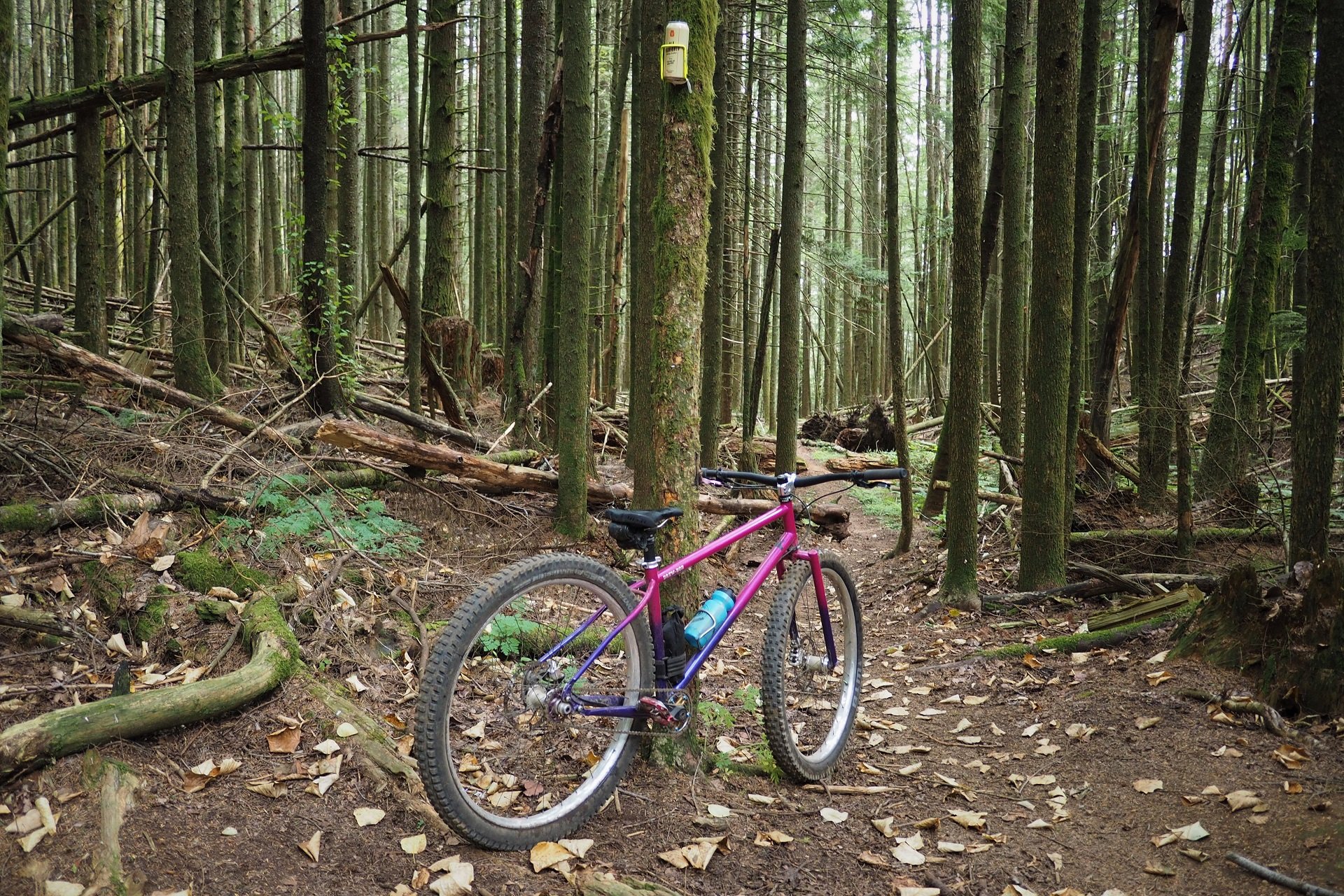
CushCore up front with just air and sealant out back.
I really don't notice the extra weight up front and with a couple rides under my belt I'm enjoying the damped combination of the dual-ply sidewall and the CushCore insert. Since the CushCore 'tire suspension' insert is already quite damped I'd imagine lighter riders would be happy paring down to a more forgiving sidewall like WTB's lighter casing, Maxxis' EXO, or the Bontrager SE casing I'm running for my rear tire. I find the extra support leaning my bike over is immediately noticeable and, with no loss of small bump isolation, it's easy to imagine this becoming a prime setup for me.
I've now installed the rear insert as well and I'm a bit paranoid that it will feel significantly slower turning over the back wheel up steep local climbs. Especially combined with the knobby Bontrager SE5 I've been loving. Balanced against extra traction and the number of dents in both the wheels I run on the back of my hardtail, I'm really hoping it's something I can ignore or overcome.
The new Plus-sized CushCore systems are already available at dealers and online for 150 USD. I'm happy to answer any questions below and I'll have a full review once I'm satisfied I've abused them adequately.
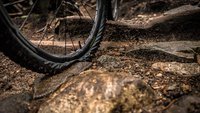
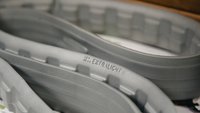
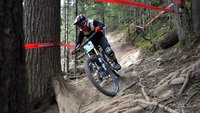
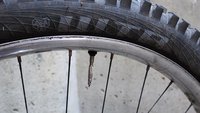




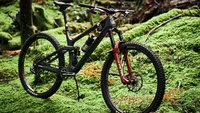

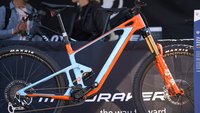
Comments
Michael
4 years, 7 months ago
I never thought of myself as much of a weight weenie but by your numbers I’m absolutely solidly in the weenie camp ;)
Reply
Andrew Major
4 years, 7 months ago
It's all relative! No difference between this and running a coil shock on my Marin - I'm happy to choose a lighter product with no performance cost but I'm not sacrificing performance to save grams. Tires and CushCore both qualify here for the trails I'm riding.
Reply
Agleck7
4 years, 7 months ago
One thing to consider in the rear: On my trail bike, I switched to a Minion SS rear from the DHF i was running (both exo) when i added CC. The faster rolling speed definitely makes up for some of the added weight and I didn’t noticed much of a reduction in climbing and braking traction because CC allowed me to drop 3.5 psi and so even the SS grips pretty well.
So for your experiment, you could move down to Bonti’s faster rolling tread and see how it goes. Food for thought in a rear wheel CC application.
Reply
Andrew Major
4 years, 7 months ago
Mind reader! I have an SE2 2.6” ready to try when the SE5 is dead. Not swapping for the sake of swapping for obvious reasons. A (s)Laughter 2.6 would be a good candidate as well.
Mainly concerned about a loss of traction in very loose conditions we don’t see here in winter. I’ve ridden am SE2 in the winter otherwise.
Reply
IslandLife
4 years, 7 months ago
Interesting idea that could work well in the summer... I'd just worry about the SS tread pattern packing up during the fall/winter/spring and turning into a wet fully slick tire. I've never used the tire though.... thoughts on that?
Reply
blaklabl
4 years, 7 months ago
I used a Slaughter here in AZ, and got stuck in a monsoon rain storm by accident one day (in Prescott, so not typical decomposed granite like the Phoenix valley). It was literally the worst ride of my life, due to the amount of mud that accumulated on the tires. My 26lb plus bike weighed about 50lbs by the end of the ride, most of it on the tires, and I had to pull/drag my rig down the last mile as I couldn't clear the mud fast enough to go more than 20 feet. So yeah, I'd not recommend that.
Reply
Andrew Major
4 years, 7 months ago
Do you think a full knobby like a Butcher would have shed mud better? I was stuck in a rain storm in Moab once and the red-mud accumulation was insane on everyone’s tires. It was like nothing I’d seen. I was running a Crossmark and a 2.5” DHF and they both were clogged.
Reply
blaklabl
4 years, 7 months ago
The Butcher is what I was running up front when this occurred, and it wasn't much better. To be fair, it was the first monsoon rain of the season (or else I wouldn't have been riding) and the dirt became mud with the consistency of peanut butter. I think the Butcher would have handled it better, but neither would have been my first choice.
Reply
Andrew Major
4 years, 7 months ago
Everyone’s mud is different, but my winter SS experiences have been good. I’ve ridden recent winters on the 27x2.6” (s)Laughter and a 29x2.35 LG1 SS and in both cases traction was surprisingly good in all but the soupiest situations.
I was amazed last year in the snow. I didn’t take the LG1 SS off my FS bike and climbing No Quarter I was finding traction much easier than folks with full knobbies.
There are some situations that are much more spicy - hence running the SE5 on my rigid since that bike more often has a traction deficit BUT, I’d be all over trying the E13 SS if they made a bigger volume version.
Reply
Tjaard Breeuwer
2 years, 11 months ago
What rims did you have the 2.6 Slaughter on? I just installed on on an internal 32mm rim, and it seems to square. Looks like ‘tire sag’ would put the side knobs on the ground, slowing down rolling and wearing those nice edges.
I might have to try 2.8 for that reason.
Reply
Andrew Major
2 years, 11 months ago
I've run that tire on i29 and i30 rims. It's not particularly a long-lasting tire with either setup going on.
I don't find any semi-slicks, whether they have bigger side lugs like the Slaughter or Cumberland or nothing like the SE2 are that long wearing.
Reply
Andrew Major
2 years, 11 months ago
I've run that tire on i29 and i30 rims. It's not particularly a long-lasting tire with either setup going on.
I don't find any semi-slicks, whether they have bigger side lugs like the Slaughter or Cumberland or nothing like the SE2 are that long wearing.
Reply
Troy
4 years, 7 months ago
That's interesting. Will have to try that when I change tires.
Reply
Tremeer023
4 years, 7 months ago
Glad to see the tyre is on the right way!
Am considering one of these for my spare rear wheel on my steel HT for bigger days out at the bike park and short course DH tracks. Tyre rim combo is 35mm (id) with 2.6 tyre (currently EXO but could change it for a different 2.6). Two questions if I may:
1. Would this plus size be too wide - would I be better off with the regular version?
2. Would it still hold up railing fast bike park berms whilst providing extra damping and additional comfort over the rough stuff compared with regular tubeless set-up? The main reason I'm considering this system is because it is supposed to reduce tyre roll in sharp corners.
Any advice welcome. Many thanks.
Reply
Andrew Major
4 years, 7 months ago
Ha! Cheers,
When I talk about tire squirminess I’m referencing roll as well. It’s impressive how much support there is leaned over in corners even with too little PSI in the tires. I’m quite surprised that CC isn’t making a size for Fat Bikes as regardless of weight they would resolve my big complaint with the breed.
I’ve only run the regular version in 2.4” tires on i30 rims but given my 2.6” SE4 is on an i39 rim and its awesome I’d guess that you’d prefer the Plus version as well for your i35 / 2.6” setup. That said, you’re right in the middle ground so it may be worth getting a recommendation from CC though.
The system is working so well for me this far that I can’t see dumping it despite the extra 668-grams of rolling weight on my single speed. It’s a huge improvement over a regular tubeless setup and Huck Norris as well. You may find yourself moving it over to your non-spare wheel.
Hope that’s helpful!
Reply
Tremeer023
4 years, 7 months ago
That's really helpful thanks. I've got Huck Norris at the moment so glad to hear there is a big difference.
Cheers
Reply
Andrew Major
4 years, 7 months ago
Not even the same category of product! (although, I have not ridden the latest HN ‘sandwich’ inserts)
Reply
Andrew Major
4 years, 7 months ago
I was considering going with a Tough Casing WTB tire in the rear of this bike as well as the front - just the way I’ve been riding it - but the SE casing with the CC is excellent. No plans to consider the lighter XR casing but I can see that working for a lot of riders on Plus bikes who don’t need the extra sidewall protection but want to reduce tire roll would do well to choose CC + Light Casing over a beefed up tire.
Reply
Gotama
4 years, 7 months ago
How does the Tough Casing compare to a Maxxis DH casing? I've been running a cushcore in the front with a Specialized Hillbilly Grid 2.6 on my fs bike but after being unimpressed with the tyre and being swayed by AJ i've just opted for a Maxxis MaxxGrip in a DH casing for winter. Given how thick the DH casing felt i chose not to put the cushcore in on the assumption that the DH casing would provide a lot of the support that was previously provided by the cushcore but now having second thoughts.
BTW: great review as always.
Reply
Andrew Major
4 years, 7 months ago
It may come down to the extra volume (true 2.8” measured at the tread) but the Vigi doesn’t feel as ‘dead’ as true DH rubber (NB. the most recent <2.4” true DH rubber I’ve been on is Schwalbe and E13 mind - not Maxxis).
It’s not a direct comparison but thinking of my time on the 2.6” TC/HG WTB tires I’d say the ride is similar to the Double Down casing from Maxxis. If Iextrapolate a DD Assegai vs a DH Assegai vs the HC Vigilante I think that adds up.
I run the same 2.8” Vigi on the front of my FS bike without an insert and love it. With 29” wheels and lots of travel I can run it soft enough and still get good support. That said, I will be trying the CC setup on the bike too for the proper comparison.
Thank you!
Reply
Gotama
4 years, 7 months ago
It will be an interesting comparison. As you say, the support provided by the cushcore is excellent although i'm still slightly nervous of using them on away trips where you're further from base and could be faced with a tyre that can't be sealed which calls for an inner tube sub in as opposed to the call it a day and push the bike home option i have now. I don't find changing tyres particularly bad but it's not something i would like to attempt trail side!
Reply
Andrew Major
4 years, 7 months ago
One more advantage of the heavy duty casings - and actually the SE4 casing should get props too - is I haven’t had a flat in years - although I do seem to go through a few tubes a year helping out my fellow travellers.
In fact, I only carry a tube for myself in case I dent a rim so badly that it won’t seal tubeless and CushCore resolves that issue. For everything else I carry tire plugs.
I’m not going to even bother carrying a tube on my Walt going forward - I’m sure as heck not pulling CushCore out on the trail - and in a worst/worst case scenario (broken off valve stem?) I’ll just ride my bike our flat. At slow speeds this is doable with the inserts.
Joseph Crabtree
4 years, 7 months ago
I've used both the regular and plus versions on a 2.6 w 35i rim and would say the plus is too big for your needs.I find the 'Pro" version fills out a 2.6 with plenty of support.
Reply
Andrew Major
4 years, 7 months ago
Awesome first hand info!
Follow up question, if you were running 2.6” on an i35 with there being no chance you’d go smaller (no 2.4” rubber in your future) but you may jump up to a 2.8” would you go CC-Plus or would you prefer the ride of the standard system to the extent that you’d run it with the 2.6” period?
Thanks!
Reply
Troy
4 years, 7 months ago
I'm curious to know as well. I'm running CCplus on my 38i rims, 2.8 up front and 2.6 in the rear. LOVE the ride difference even on the full squish.
Reply
Cr4w
4 years, 7 months ago
Everything about this is absolutely ridiculous. Amazing work. Keep it up.
Reply
Andrew Major
4 years, 7 months ago
HAhahahahaha. Did you buy your rigid fork yet for your single speed?
Thank you!
Reply
Cr4w
4 years, 7 months ago
Not yet but I'm thinking about it. If I'm the first do I get a prize? I want a derailleur.
Reply
Andrew Major
4 years, 7 months ago
I've got a few XTR *cough*front*cough* derailleurs kicking around that you can choose from for first prize!
Reply
fartymarty
4 years, 7 months ago
Do it, rigid is an eye opener (especially for your riding buddies when you smoke them on trails that should only really be ridden on bouncy bikes).
Reply
Capt-Schnapps
4 years, 7 months ago
Great honest review of plus tire inserts. Combined with plus and fat tires, it's a game changer on hard riding and technical terrain.
I gotta say though I really dig the Vittoria Air Liners in my regular, plus, and fat tires. Like the CC, they offer different widths for your application. They cost less at about $55ea and weigh significantly less as well. The amount of stability they add at lowww psi is unreal and I won't ride plus or fat without them again. Install is easier than the CushCore in my experience, but it's similar that you have to get the tire toward the center channel to get it to fit easier. WTB tires are much tighter fitting, maybe too tight, than the excellent Bontragers I've been running. Wish they made a 27.5x3.0 XR3,4,5. I've found that you can much more reliably run a light casing tire with the Airliners without worrying about punctures and the insert provides all the damping you need. It can stretch after the first install but it's easy to trim it to fit right around the rim again at your next tire change.
One last thing, I recently had a flat due to my tubeless tape on the rim finally failing after yet another tire swap (I have a tire addiction problem) and it was a revelation to be able to just pedal easy and roll back out to the trailhead without any tire, rim, or insert damage. Fixing flats trailside is a thing of the past.
Reply
Tjay Mac
4 years, 2 months ago
I have Vittoria Airliner, Huck Norris and Cushcore all in Plus size. Vittoria airliner is better than huck norris in terms of rim/pinch flat protection. Weight of the two are almost the same because you need to put 4oz with the HN while the VA only need 2oz since VA doesn't absorb sealant like HN (HN is 60g ligher but you can't feel this added weight). Performance-wise between VA and HN, the HN is better because you can't really feel the foam's density. The VA in my Full Suspension is like having a rear shock without rebound adjustment where the rear-end is just bouncy up and down. HN foam in not that dense so you can't feel this bounce. Both VA and HN doesn't have sidewall support.
The cushcore is better than both in terms of protection and performance. It has sidewall support that you can run even -3 psi from airliner or huck norris without squirming! On highspeed runs, you don't need to hold back and worry about the tire bottoming out. You can actually let go of that brakes and let the CC take it. Only downside is the weight. Expect an additional 100G between the two brands.
Reply
Andy Eunson
4 years, 7 months ago
From what I’ve been reading lately, the rotating weight thing is a myth. It’s the overall weight that matters. That’s what is being accelerated and pedalled uphill. Makes sense then that even if heavier wheel systems do affect acceleration and climbing performance it’s not that big a deal. Particularly when over performance factors are greatly enhanced. That said, climbing the Black Tusk road today and into Jake I could have used a lighter bike.
Reply
Cam McRae
4 years, 7 months ago
Do you have a link that refers to this theory Andy?
Reply
Andy Eunson
4 years, 7 months ago
http://www.biketechreview.com/reviews/wheels/63-wheel-performance
Reply
kain0m
4 years, 7 months ago
Let's not forget that that article is about road racing, where the velocity is almost constant for the majority of time, and the wheels and tires are much, much lighter. It won't translate directly into mountain biking - a road tire weighs little more than half of this cushcore plus insert.
Reply
blaklabl
4 years, 7 months ago
Super interested in this reading as well, the overall rotating weight of this setup on a plus bike is the only thing holding me back.
Reply
kain0m
4 years, 7 months ago
Rotating mass matters significantly in acceleration. Once you are going, it isn't different from non-rotating mass, though. More mass equals more stability - but it is less agile feeling.
Basically, the inertia you feel when you spin up a wheel in the air is what is added to the longitudinal acceleration. It isn't insignificant, for a tire it essentially means that the total inertia is double that of it's weight.
But once you are going, the impact is small. You'll not notice it grinding up a hill, but you'll notice it in a sprint.
Reply
Troy
4 years, 7 months ago
My carbon 27.5 Roval 38i with CC and 2.8 Butcher front 2.6 Purgatory rear are each a pound heavier than the stock 29" 30i Raceface Aeffect with 2.3 DHF/Rs the bike came with, but the feeling and performance of the tires with the CC is SO much better that it's worth the weight penalty for me. I've recently gone back to the 29" just to see and I just don't like the feeling.
Reply
blaklabl
4 years, 7 months ago
This is a pretty strong endorsement, I run those same wheels but with 3.0 tires, and the only thing holding me back is the fear of the weight. I didn’t like having to run higher psi with 2.8’s, so maybe this would be a way to get Tire weight down a touch, run lower psi, and have the weight of the CC put it back to was weight wise. Something to think about I suppose.
Reply
Morgan Heater
4 years, 7 months ago
Out of curiousity, what to you weigh and what pressures can you get away with when you're not running cushcore?
My rear rim tends to start making regular ominous noises and feeling super vague and weird in corners whenever I go below 23 or 24 psi in my rear wheel.
Reply
Andrew Major
4 years, 7 months ago
23-24psi in what tire - size and casing?
I’m ~185lbs. Pressure depends on setup. Speaking to the tires on this bike (29x2.8” dual ply front / 29x2.6” reinforced sidewall rear on i39) I was running ~17/18psi front and 19/20psi rear.
Similar casings but a smaller size tire - say 2.4” on an i30 - I’d be running somewhere in the 23-25 range depending on the exact setup. If I go to lighter sidewalls the pressure goes up from there.
I find I generally am running >2+ psi more front and rear on my suspension bike. Higher speeds, traction is less premium, and I dent rims if I go too low (before the bike feels squirrely I start wrecking stuff).
Reply
Morgan Heater
4 years, 7 months ago
I'm about the same weight, I'm currently on 2.4" minion dhr exo+ (I think, so many different combos, it's hard to keep track), my rims are 30mm internal. So it sounds like you have pretty similar requirements.
That's pretty crazy that you can get that low with the chubbier rubber!
Reply
Andrew Major
4 years, 7 months ago
When I first started experimenting with Plus rubber (3" DHF) I happened to bump into some of the Rocky Mountain guys who'd been playing with big meat for a while (Pipeline 27+, Suzi-Q w/ 29+ setup, Maiden with 26+, etc) and they called me on to much pressure just at a glance.
Scotty from Rocky told me his trick was to keep airing them down until they got squirrely in corners or I started bottoming too much and then add a bit of air and that's how I've set up big rubber since then. I've only bothered to get PSI numbers for article's sake as usually, I do it all with feel.
What's crazy with CushCore is the support leaned over is so good I actually find myself adding a bit more air than I need based on those factors (bottom out and cornering support) just to make the tire ramp a bit more progressively.
Reply
Kos
4 years, 7 months ago
The rigid fork is "an excellent tool for isolating product differences". YES!
W/R/T weight, keep reminding yourself that in flat track motorcycle racing, there is a limit to the MAX that a wheel/tire combination can weigh. Weight can't always be bad!
Reply
Vik Banerjee
6 months, 1 week ago
Late to comment, but I just installed two CC 29+ inserts. I'm not a CC fan in general and for my skinny 29 x 2.6" hardtails I've gone with a Tannus Tubeless in the rear and been very happy with the easy install/trail performance. Since Tannus doesn't serve the Plus market I decided to go all in with dual Cushcore Plus. I was expecting it to be a hard/painful install.
With the install fresh in my mind I'll say it wasn't as bad as I had feared. It wasn't any fun and significantly harder than my Tannus installs, but not truly awful. My hope is I'll install a new set of tires in the Fall and enjoy the sharp knobs in the winter then burn them off in the Summer. Repeat the next Fall. One swap a year seems reasonable.
Watch a couple quality CC install videos. Take your time. Work methodically. If you are getting frustrated walk away then come back to it. If things are really not working you are doing something wrong so go back and watch another install video. If you can get your hands on the CC butt plug tire lever tool it's pretty great. I used soapy water vs. the sealant idea mentioned in the article as it was less messy. Use a garbage can to work on the wheel. It really helps. If in doubt push more tire bead deeper into the rim channel it's always the right answer.
On the Plus side I gotta say it really feels like a great achievement once you get it done.
I also know why CC riders don't bring a tube with them when heading out. Nobody in their right mind would want to try and unmount that tire/insert on the trail! Ride out on the flat or walk!
No comment on the performance end of things, but I am hopeful.
Reply
Please log in to leave a comment.